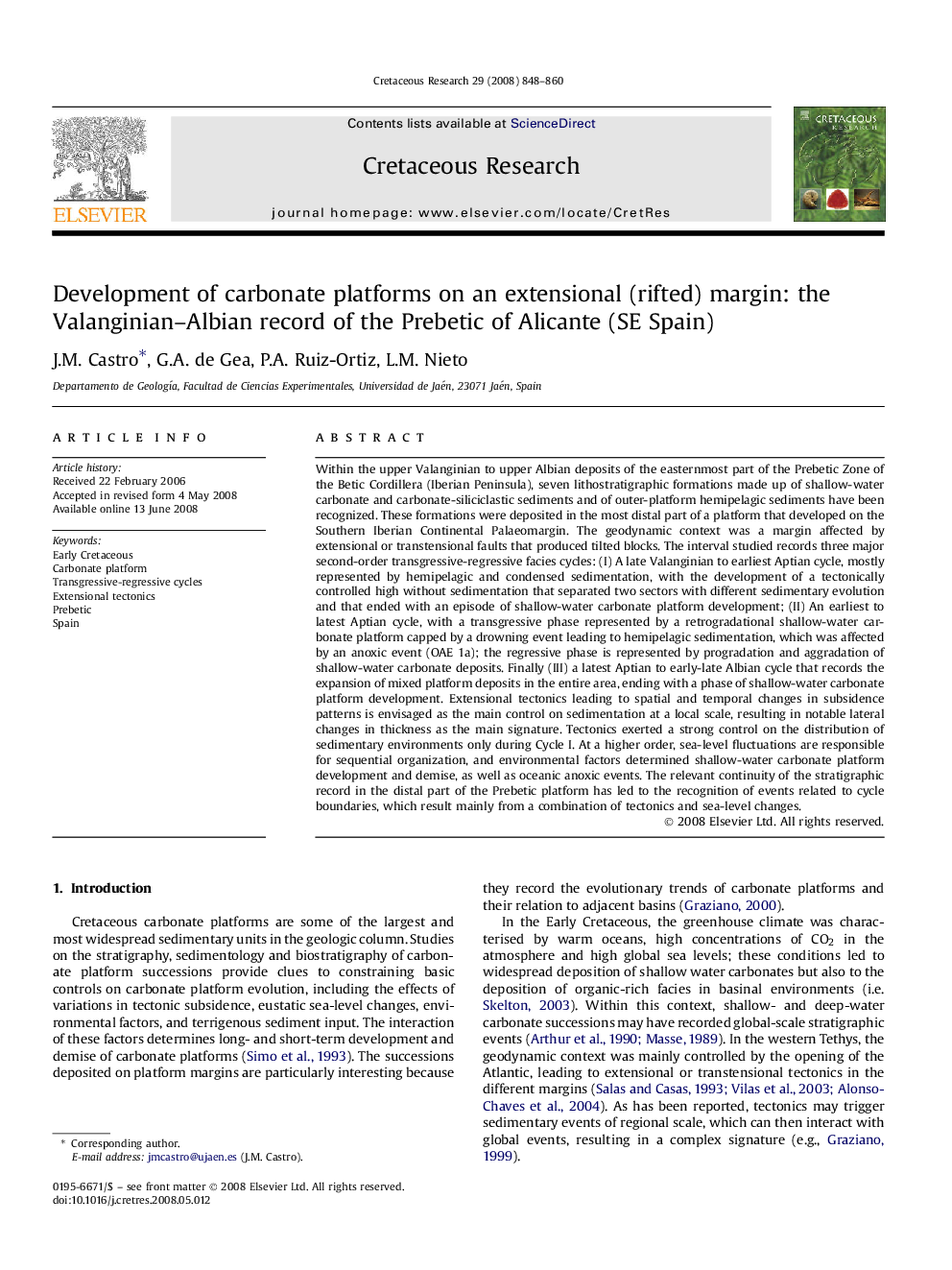| کد مقاله | کد نشریه | سال انتشار | مقاله انگلیسی | نسخه تمام متن |
|---|---|---|---|---|
| 4747699 | 1642090 | 2008 | 13 صفحه PDF | دانلود رایگان |

Within the upper Valanginian to upper Albian deposits of the easternmost part of the Prebetic Zone of the Betic Cordillera (Iberian Peninsula), seven lithostratigraphic formations made up of shallow-water carbonate and carbonate-siliciclastic sediments and of outer-platform hemipelagic sediments have been recognized. These formations were deposited in the most distal part of a platform that developed on the Southern Iberian Continental Palaeomargin. The geodynamic context was a margin affected by extensional or transtensional faults that produced tilted blocks. The interval studied records three major second-order transgressive-regressive facies cycles: (I) A late Valanginian to earliest Aptian cycle, mostly represented by hemipelagic and condensed sedimentation, with the development of a tectonically controlled high without sedimentation that separated two sectors with different sedimentary evolution and that ended with an episode of shallow-water carbonate platform development; (II) An earliest to latest Aptian cycle, with a transgressive phase represented by a retrogradational shallow-water carbonate platform capped by a drowning event leading to hemipelagic sedimentation, which was affected by an anoxic event (OAE 1a); the regressive phase is represented by progradation and aggradation of shallow-water carbonate deposits. Finally (III) a latest Aptian to early-late Albian cycle that records the expansion of mixed platform deposits in the entire area, ending with a phase of shallow-water carbonate platform development. Extensional tectonics leading to spatial and temporal changes in subsidence patterns is envisaged as the main control on sedimentation at a local scale, resulting in notable lateral changes in thickness as the main signature. Tectonics exerted a strong control on the distribution of sedimentary environments only during Cycle I. At a higher order, sea-level fluctuations are responsible for sequential organization, and environmental factors determined shallow-water carbonate platform development and demise, as well as oceanic anoxic events. The relevant continuity of the stratigraphic record in the distal part of the Prebetic platform has led to the recognition of events related to cycle boundaries, which result mainly from a combination of tectonics and sea-level changes.
Journal: Cretaceous Research - Volume 29, Issues 5–6, October–December 2008, Pages 848–860